Puzzling Palpa Lines In Peru Made By The Paracas Culture Are Even Older Than The Nazca Lines
Ellen Lloyd - AncientPage.com - The enigmatic Palpa lines in Peru are not as famous as the Nazca Lines, but these puzzling lines and geoglyphs that can only be properly viewed from the air are equally fascinating.
Archaeological examinations reveal the Palpa lines are older than the Nazca lines and were most likely created by the Paracas culture. This Andean society existed between about 800 BCE and 100 BCE in what today is the Ica Region of Peru.
The Palpa lines are located between Sacramento, Pinchango, and Llipata. The purpose of the lines and geoglyphs is unknown. There are as many as 600 geoglyphs of giant size. They represent a series of human and animal zoomorphic figures, including the Familia Real (Royal Family), a group of eight figures on a hillside.
Like the Nazca lines, these ancient carvings are regarded as one of archaeology's greatest enigmas because of their quantity, nature, size, and continuity. Scientists suggest the geoglyphs had ritual astronomical functions.
Palpa Lines and Geoglyphs, Peru. Credit: Adobe Stock - javarman
These giant geoglyphs and lines must have been important to our ancestors, and they were undoubtedly not easy to create. Many consider the figures an extraordinary example of the traditional and millenary magical-religious world of the ancient pre-Hispanic societies that flourished in Peru.
The mysterious Candelabrum located about 130 miles from the Nazca Plain, is one of the most enigmatic ancient giant ground drawings in the world.
Paracas Candelabra. Image credit: Alex Zanuccoli - flickr.com
The Candelabra is 595 feet long and resembles a candlestick, seen from as far as 12 miles to sea. Its creators believed it was important that the ground drawing must be visible from the air. Who made it and why? It is a question no one has been able to answer so far.
It’s important to note that similar geoglyphs have been found in North America as well. We wrote on Ancient Pages that over 300 remarkable intaglios exist in the American Southwest and adjacent Mexico.
The most famous are the Blythe Intaglios, located west of the Colorado River about 15 miles north of Blythe, California.
Blythe Intaglios. Image credit: Rsfinlayson - CC BY-SA 4.0
Here, we come across gigantic human and animal figures carved on the ground. Just like Peru's wonderful and intriguing Nazca lines, these figures can only be adequately seen from the air, which is why white men didn't discover them until the 20th century.
According to the stories told by modern-day Mohave and Quechan Indians, the human figures represent Mastamho, the Creator of Earth and all Life, while the animal figures represent Hatakulya, one of two mountain lions who helped in the Creation.
" In the Mohave myth, there are two totemic lion figures, helpers to Mustamho (the creator), who are known as Numeta and Hatakulya. Those lion figures are present in numerous petroglyph locations. Numeta is normally depicted with his tail up in the air while Hatakulya has his tail down.." (Johnson, 1986)
Recently, researchers found a new giant geoglyph of orca with mysterious symbols and a ‘trophy head’ in the Nazca Desert.
The figures are difficult to discover because they can only be properly from the air. We can only wonder how many more giant geoglyphs are hiding in front of our eyes.
Updated on October 29, 2023
Written by Ellen Lloyd – AncientPages.com
Copyright © AncientPages.com All rights reserved. This material may not be published, broadcast, rewritten or redistributed in whole or part without the express written permission of AncientPages.com
Expand for referencesAlex Patterson, A Field Guide to Rock Art Symbols of the Greater Southwest
More From Ancient Pages
-
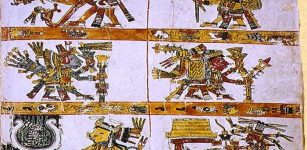 Codex Borgia: Pre-Columbian Mexican Manuscript Of Great Importance
Ancient Traditions And Customs | Sep 7, 2016
Codex Borgia: Pre-Columbian Mexican Manuscript Of Great Importance
Ancient Traditions And Customs | Sep 7, 2016 -
 Old Book Mysteriously Controlling The Minds Of Thousands Was Banned – But What Or Who Caused This Chilling Phenomenon?
Featured Stories | Nov 5, 2024
Old Book Mysteriously Controlling The Minds Of Thousands Was Banned – But What Or Who Caused This Chilling Phenomenon?
Featured Stories | Nov 5, 2024 -
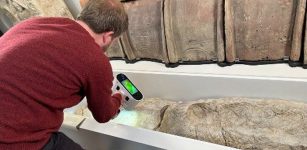 3D Scans Used To Study Mysterious Roman Burial Practice
Archaeology | Jun 5, 2023
3D Scans Used To Study Mysterious Roman Burial Practice
Archaeology | Jun 5, 2023 -
 On This Day In History: Battle Of Vincennes, Indiana – On Feb 24-25, 1779
News | Feb 24, 2017
On This Day In History: Battle Of Vincennes, Indiana – On Feb 24-25, 1779
News | Feb 24, 2017 -
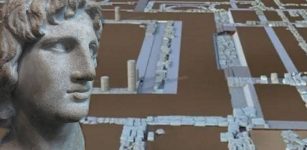 Visit The Palace Where Alexander The Great Was Born In Pella
Archaeology | Oct 21, 2020
Visit The Palace Where Alexander The Great Was Born In Pella
Archaeology | Oct 21, 2020 -
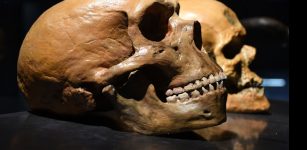 Human And Neanderthal Brains Have A Surprising ‘Youthful’ Quality In Common – New Study
Featured Stories | Jan 6, 2023
Human And Neanderthal Brains Have A Surprising ‘Youthful’ Quality In Common – New Study
Featured Stories | Jan 6, 2023 -
 On This Day In History: Napoleon Bonaparte Dies In Exile – On May 5, 1821
News | May 5, 2016
On This Day In History: Napoleon Bonaparte Dies In Exile – On May 5, 1821
News | May 5, 2016 -
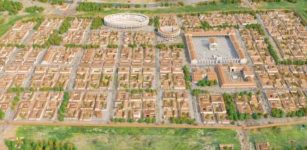 Stunning Reconstructions Shows What Colchester Looked Like During Roman Times
News | Jul 2, 2022
Stunning Reconstructions Shows What Colchester Looked Like During Roman Times
News | Jul 2, 2022 -
 Resourceful Neanderthals Could Dive 13ft If Necessary To Collect Shells
Archaeology | Jan 16, 2020
Resourceful Neanderthals Could Dive 13ft If Necessary To Collect Shells
Archaeology | Jan 16, 2020 -
 On This Day In History: Mary Queen Of Scots Born – On December 8, 1542
News | Dec 8, 2016
On This Day In History: Mary Queen Of Scots Born – On December 8, 1542
News | Dec 8, 2016 -
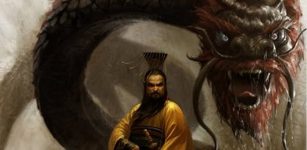 Mysteries Of The Yellow Emperor – The ‘Son Of Heaven’ From Regulus
Chinese Mythology | Oct 10, 2021
Mysteries Of The Yellow Emperor – The ‘Son Of Heaven’ From Regulus
Chinese Mythology | Oct 10, 2021 -
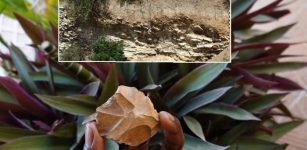 Longstanding Cultural Continuity At Oldest Occupied Site In West Africa – New Study
Archaeology | May 4, 2023
Longstanding Cultural Continuity At Oldest Occupied Site In West Africa – New Study
Archaeology | May 4, 2023 -
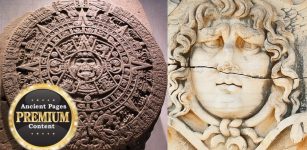 The Aztec Sun Stone And Medusa Reveal An Intriguing Connection – Surprising Discovery – Part 1
Ancient Mysteries | Jul 30, 2018
The Aztec Sun Stone And Medusa Reveal An Intriguing Connection – Surprising Discovery – Part 1
Ancient Mysteries | Jul 30, 2018 -
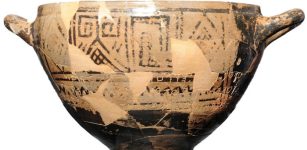 Mystery Of The Tomb Of Nestor’s Cup Unraveled
Archaeology | Oct 6, 2021
Mystery Of The Tomb Of Nestor’s Cup Unraveled
Archaeology | Oct 6, 2021 -
 Once Looted Nearly 1,000-Year-Old Maya Text Is Authentic – Mexican Experts Say
Archaeology | Sep 1, 2018
Once Looted Nearly 1,000-Year-Old Maya Text Is Authentic – Mexican Experts Say
Archaeology | Sep 1, 2018 -
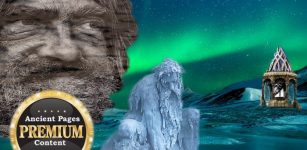 Ancient Mystery From The Age Of Taurus And The Murdered Astronomer – Evidence In The Arctic ? – Part 2
Ancient Mysteries | Nov 1, 2019
Ancient Mystery From The Age Of Taurus And The Murdered Astronomer – Evidence In The Arctic ? – Part 2
Ancient Mysteries | Nov 1, 2019 -
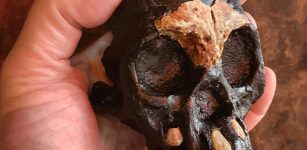 Ancient Mystery Of Leti – A Homo Naledi Child Of Darkness Discovered In The Rising Star Cave System
Archaeology | Nov 6, 2021
Ancient Mystery Of Leti – A Homo Naledi Child Of Darkness Discovered In The Rising Star Cave System
Archaeology | Nov 6, 2021 -
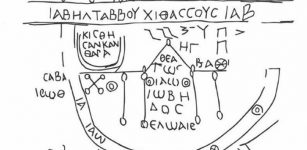 A Remarkable Curse Tablet Dated To the 1st Century AD – Unearthed In Tongeren
Archaeology | Jul 10, 2020
A Remarkable Curse Tablet Dated To the 1st Century AD – Unearthed In Tongeren
Archaeology | Jul 10, 2020 -
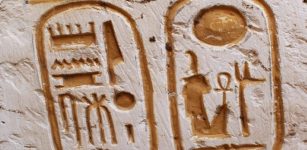 Palace Located Inside Ancient Temple Of Ramses II Discovered In Abydos, Egypt
Archaeology | Apr 1, 2019
Palace Located Inside Ancient Temple Of Ramses II Discovered In Abydos, Egypt
Archaeology | Apr 1, 2019 -
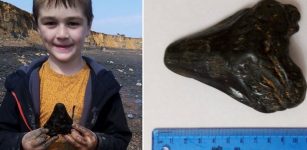 Schoolboy Finds A Huge 3,000,000-Year-Old Megalodon Shark Tooth On British Beach
Archaeology | May 9, 2022
Schoolboy Finds A Huge 3,000,000-Year-Old Megalodon Shark Tooth On British Beach
Archaeology | May 9, 2022





